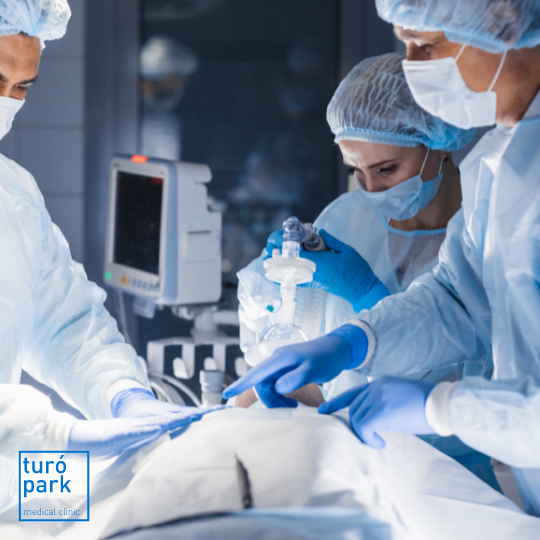Do you suffer from biliary lithiasis and want to have your surgery in Barcelona?
Gallbladder removal, also known as cholecystectomy, is a surgical procedure regularly performed to remove a diseased gallbladder. This operation, which is necessary in certain cases, does not have any negative consequences for the patient: digestion continues normally, as the role of the gallbladder is secondary.
Do you suffer from gallbladder disease and would like to have your surgery in Barcelona? Make an appointment now with our experienced general surgeons.
What is the gallbladder?
The gallbladder is a pear-shaped organ located just below the liver on the right side of the abdomen. Its role is to store the bile produced by the liver.
Sometimes changes in the composition of the bile, or the presence of germs, cause crystals to form stones. This is called biliary lithiasis.
Fast track your treatment
To book an appointment or speak with one of our friendly team, please get in touch using the options below.

What are the indications for gallbladder removal?
If the presence of stones in the gallbladder alone is not an indication for surgery, the appearance of pain or complications require an operation.
The most frequent complications of gallstones are
- Cholecystitis or inflammation of the gallbladder
- Hydrocholecyst or acute distension of the gallbladder, due to obstruction of the cystic duct
- Acute pancreatitis or acute inflammation of the pancreas
- Angiocholitis or infection of the bile ducts
As the gallbladder is no longer functional, due to the presence of stones, and is not vital, the solution is surgical removal (or cholecystectomy).
What does gallbladder surgery involve?
The operation is performed under general anaesthesia and lasts from 30 to 90 minutes.
Two types of surgery are possible to remove the gallbladder:
- Laparoscopic surgery: This technique involves making four small incisions in the abdomen. The gallbladder is then removed through the umbilicus under the control of a mini-camera inserted into the abdomen (laparoscopy).
- Open surgery (laparotomy): Necessary in certain special cases, this technique requires only one incision of 7 to 10cm in the abdomen.
Your health is our priority.
Our English-speaking general surgeons treat a wide variety of conditions & specialized surgical procedures.

Gallbladder removal: risks and possible complications
The removal of the gallbladder is a common operation with few risks of complications.
In the immediate post-operative period, intense pain in the shoulders, which subsides within a few days, may be felt due to the injection of gas into the abdomen during the laparoscopy. Similarly, diarrhoea and disgust for certain foods may occur temporarily.
What happens after the operation?
Discharge is sometimes scheduled for the same day or, more often, for the day after the operation. There is no home care or diet to follow.
The recovery time is longer after laparotomy cholecystectomy (about 4-6 weeks) than after laparoscopic cholecystectomy (about 1 week).
There are usually no consequences of living without a gallbladder or diet after this operation.
Our multilingual general surgeons

